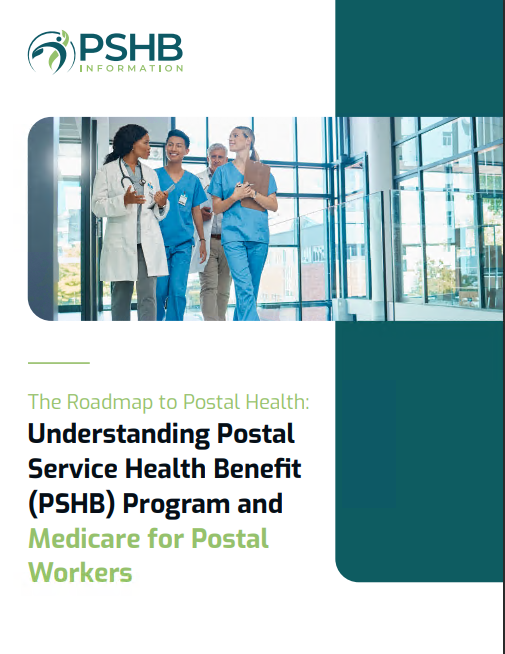Key Takeaways
-
Starting in 2025, certain USPS retirees and their eligible family members must enroll in Medicare Part B to maintain their health coverage under the new Postal Service Health Benefits (PSHB) Program.
-
Failure to enroll in Medicare Part B when required could result in the loss of prescription drug coverage and increased out-of-pocket medical expenses.
Why This New Rule Matters
If you’re a USPS retiree or an employee nearing retirement, 2025 brings a major shift in how your health benefits work. The transition from the Federal Employees Health Benefits (FEHB) Program to the Postal Service Health Benefits (PSHB) Program isn’t just a name change. It includes a crucial Medicare Part B requirement that could significantly impact your access to affordable care.
Understanding what’s required, who’s affected, and the steps you need to take now will help you protect your benefits and avoid costly mistakes.
Who Must Enroll in Medicare Part B?
Enrollment in Medicare Part B is now mandatory for many USPS annuitants and eligible family members if they want to maintain full PSHB coverage in 2025 and beyond. You are required to enroll if:
-
You are a USPS retiree or annuitant eligible for Medicare as of January 1, 2025, or later.
-
You are a covered family member (such as a spouse) who is also Medicare-eligible.
There are some exceptions, including:
-
USPS annuitants who retired on or before January 1, 2025 and are not enrolled in Medicare Part B.
-
Individuals who reside abroad permanently.
-
Medicare-eligible family members who qualify for care through the Veterans Health Administration or Indian Health Services.
-
Employees aged 64 or older as of January 1, 2025, are not required to enroll until they retire.
What Happens If You Don’t Enroll?
If you’re required to enroll in Medicare Part B and choose not to, the consequences are serious:
-
You will lose access to prescription drug coverage under the PSHB program, because drug benefits are integrated through Medicare Part D via an Employer Group Waiver Plan (EGWP).
-
You may face limited re-enrollment opportunities and may not be able to regain coverage easily.
-
Your overall out-of-pocket costs for doctor visits, hospital stays, and medications may rise significantly.
This rule is not optional for those who fall within the affected categories.
Understanding the Medicare Part B Requirement
Medicare Part B covers outpatient services like doctor visits, preventive screenings, and durable medical equipment. Under PSHB, enrolling in Part B is not just beneficial — it’s required for continued access to full medical and drug coverage.
Here’s why:
-
PSHB plans are designed to coordinate with Medicare to reduce your deductibles, copays, and coinsurance.
-
Many PSHB plans offer enhanced benefits to enrollees who have both PSHB and Medicare Part B, such as waived deductibles or reduced cost-sharing.
Failing to enroll in Medicare Part B can also mean facing late enrollment penalties, which increase the longer you delay signing up after becoming eligible.
Important Dates You Need to Know
The new requirements rolled out on January 1, 2025. Several key periods impact your ability to enroll:
-
The Special Enrollment Period (SEP) for Medicare Part B ran from April 1 to September 30, 2024. This window was a one-time opportunity to sign up without penalty.
-
The PSHB Open Season took place from November to December 2024, allowing plan selection changes.
-
Starting January 2025, the PSHB Program officially replaced FEHB for USPS employees and annuitants.
From now on, newly eligible Medicare beneficiaries must enroll in Part B at the time they become eligible to maintain PSHB coverage.
How PSHB Coordinates With Medicare
Once you’re enrolled in both PSHB and Medicare Part B, the programs work together to cover your health care needs:
-
Medicare pays first for covered services.
-
Your PSHB plan acts as secondary insurance, helping cover what Medicare doesn’t — such as coinsurance and copayments.
-
Prescription drug benefits are administered through a Part D EGWP, which includes an annual out-of-pocket cap and a $35 monthly cap on insulin.
The structure is designed to limit your financial exposure and ensure a smoother billing process.
What You Should Do Right Now
If you’re a USPS retiree or employee approaching retirement age, take the following actions to stay ahead of this transition:
1. Verify Your Medicare Status
-
Check whether you’re eligible for Medicare Part A and Part B.
-
Know your eligibility date to avoid missing critical enrollment windows.
2. Evaluate Whether the Rule Applies to You
-
If you’re retiring after January 1, 2025, and turning 65, you will likely need to enroll in Medicare Part B.
-
If you’re already retired and not enrolled in Part B, verify if you qualify for an exemption.
3. Enroll in Medicare Part B On Time
-
Sign up during your Initial Enrollment Period — this 7-month window begins 3 months before the month you turn 65.
-
Late enrollment penalties can be lifelong and increase your monthly costs.
4. Review Your PSHB Plan Options During Open Season
-
Compare how your chosen plan coordinates with Medicare.
-
Plans differ in how much they reimburse for Medicare Part B premiums and what cost-sharing benefits they provide.
Prescription Drug Coverage Changes
One of the biggest differences between FEHB and PSHB is how prescription drug coverage works. PSHB’s prescription benefits are now tightly linked with Medicare Part D through an EGWP:
-
If you’re enrolled in both PSHB and Medicare Part B, you’ll be automatically enrolled in the Part D plan.
-
If you opt out of Medicare Part B, you lose access to the EGWP drug benefit.
This integrated setup is why Medicare Part B enrollment is essential — it directly affects your access to medications.
How Costs Are Affected
Generally, coordinating Medicare with PSHB leads to lower overall costs, even though you pay a Medicare Part B premium:
-
PSHB plans often waive deductibles or reduce copayments when paired with Medicare.
-
You may see savings on hospital stays, outpatient services, and prescription drugs.
-
Not enrolling in Part B can leave you responsible for higher out-of-pocket medical costs, especially if you require ongoing care.
While premiums for Part B add an upfront cost, the enhanced coverage can offset expenses in the long run.
What About Other Federal Benefits?
The new Medicare rule under PSHB does not affect your eligibility for other benefits like:
-
FEDVIP (Federal Dental and Vision Insurance Program)
-
FEGLI (Federal Employees’ Group Life Insurance)
-
FLTCIP (Federal Long Term Care Insurance Program)
-
FSAFEDS (Flexible Spending Accounts)
These benefits operate separately from PSHB and are not contingent on Medicare Part B enrollment.
Avoiding Common Mistakes
With this transition, some missteps can cause lasting consequences. Here’s what to avoid:
-
Ignoring enrollment notices: USPS retirees should closely read mail and email communications about Medicare requirements.
-
Missing enrollment deadlines: A delayed Part B enrollment can result in penalties and the loss of drug coverage.
-
Assuming you’re exempt: Even if you’re currently covered under FEHB, your eligibility status changes once PSHB becomes active.
Preparation is your best protection against unexpected coverage gaps.
The Bigger Picture for Your Health Coverage
This Medicare rule is about more than just paperwork — it’s a major turning point in your health care as a USPS retiree. With proper planning, the new PSHB-Medicare setup can actually work in your favor by delivering more efficient, affordable care.
But the key is acting early and understanding how the pieces fit together.
Stay Protected and Get Expert Help
The 2025 PSHB change brings lasting implications for your retirement health care — and it’s too important to overlook. Making the right move now means securing comprehensive benefits and avoiding future coverage disruptions.
If you’re unsure whether this rule applies to you or how to handle your Medicare enrollment, get in touch with a licensed agent listed on this website for professional advice.








